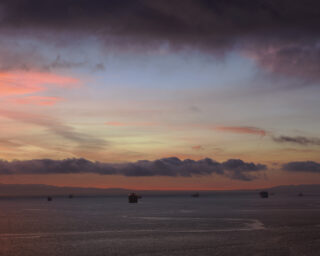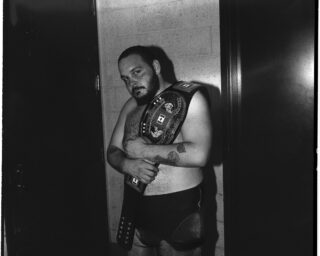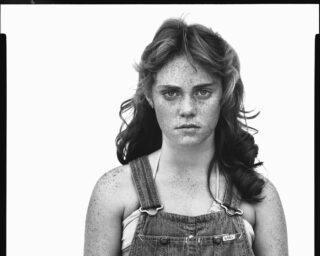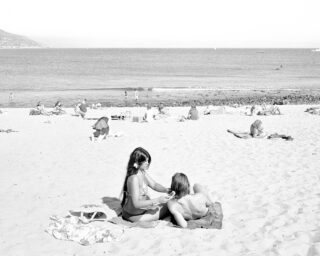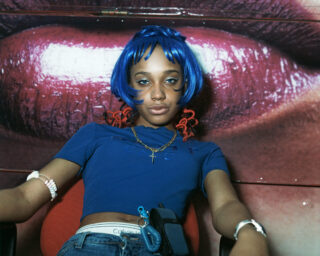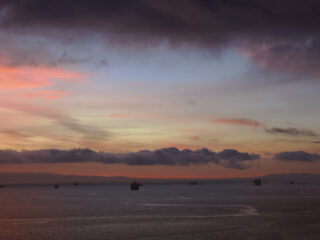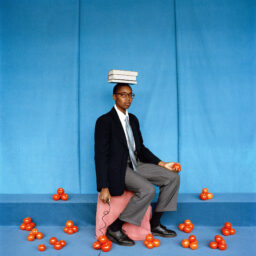Richard Meyer On the Term "Queer"

Untitled (Pier, David Wojnarowicz project), 2001–07
For the “Queer” issue, Aperture magazine asked Vince Aletti, Richard Meyer, and Catherine Opie to reflect on the term queer and its relationship with photography. Here, we run an excerpt from Meyer’s response, in which the Robert and Ruth Halperin Professor in Art History at Stanford University discusses Emily Roysdon’s restaging of David Wojnarowicz’s photographs as well as German aristocrat Baron Wilhelm von Gloeden’s carefully crafted scenes of classical homoeroticism. Tonight, Meyer will moderate Aperture’s panel discussion “Queer Genealogies” at the New School, with writer and critic Vince Aletti, associate curator of photography at the Art Gallery of Ontario Sophie Hackett, and artist K8 Hardy. The panel will explore how contemporary photographers have cast their attention backward to draw upon and engage the visual record of gay, lesbian, trans, and nonnormative sexualities. This article first appeared in Issue 3 of the Aperture Photography App: click here to read more and download the app.
Although it may seem hopelessly “nineties” to some, the word queer continues to provide a crucial means of opposition. In the recent book Art and Queer Culture, written by Catherine Lord and myself [Richard Meyer], we wrote, “We have chosen the term “queer” in the knowledge that no single word can accommodate the sheer expanse of cultural practices that oppose normative heterosexuality. In its shifting connotation from everyday parlance to phobic epithet to defiant self-identification, “queer” offers more generous rewards than any simple inventory of sexual practices or erotic object choices. It makes more sumptuous the space between best fantasy and worst fear.” The last line of this passage was a reference to an early 1970s gay liberation slogan proclaiming “I am your worst fear. I am your best fantasy.” By citing this slogan within a book on queer art published in 2013, Lord and I suggest that recursive power and expansive history of queer culture.
For many years the work of queer photographers has been necessarily—if sometimes unwittingly—indebted to the sexual and subcultural imagery long preceding it. In some of the most exciting examples of such work, the photographer’s debt to queer history is openly, at times even extravagantly, acknowledged. For example, in 1991, Canadian photographer Nina Levitt partially erased a reprint of an 1891 picture by Staten Island–based amateur photographer Alice Austen of two female couples embracing, one of which includes Austen herself. The title of Austen’s original picture, That Darned Club, parrots the voice of an exasperated man excluded from the women’s intimacy while alluding, however lightheartedly, to the damnation of late nineteenth-century women who rejected the company and authority of men. Retrieving the photograph a century later, Levitt asks us to consider the visual record of lesbian life: what has been submerged that might yet be excavated or allowed to emerge. Like Levitt’s image, titled Submerged (for Alice Austen), the history of lesbian culture hovers between visibility and erasure, resolution and apparition.
Artist Emily Roysdon has initiated an equally vivid dialogue with the photographic work of a queer predecessor, in this case the late David Wojnarowicz. Across a series of twelve photographs, Roysdon both reimagines and restages Wojnarowicz’s Rimbaud in New York series (1978–79) in which a man wearing a face mask of fin-de-siècle poet Arthur Rimbaud surfaces at different locations in 1970s New York City—riding the subway, shooting up at the piers, outside an X-rated movie theater in Times Square. Although many assume the project to be self-portraiture, in fact Wojnarowicz asked a friend to wear the Rimbaud mask and then followed him to different sites throughout the city. Wearing a paper mask bearing the likeness of Wojnarowicz, Roysdon produces a touchingly inexact restaging of Rimbaud in New York. Where, for example, the original series featured “Rimbaud” masturbating on a hotel bed, we now see Roysdon pleasuring herself with a dildo. Untitled (David Wojnarowicz), 2001–2007, bespeaks both an embodied lesbian difference and a desire to create queer art across the divides of both gender and generation. Central to the logic of Roysdon’s “surrogacy” of the earlier series is the double displacement Wojnarowicz performed in the late 1970s—asking a friend, masked as a queer poet from the previous century, to stand in for the photographer’s own journey through the urban landscape.
Throughout the history of photography, queers have sought out real or fictive archives on which to base—and from which to stage—their own sexual imaginings. Living in Sicily at the end of the nineteenth century, German aristocrat Baron Wilhelm von Gloeden, for example, choreographed scenes of classical homoeroticism by photographing toga-clad (and unclad) adolescent boys and young men among fluted columns and other faux-antique props. Von Gloeden’s photographs— collected by the writer Oscar Wilde, the sexologist Alfred Kinsey, and later, the photographer Robert Mapplethorpe—reveal as much about the homoerotic imagination of the late nineteenth century as about the sexual culture or customs of Greco-Roman antiquity.

Emily Roysdon, Untitled (Three Girls, David Wojnarowicz project), 2001–07. Courtesy the artist
Von Gloeden’s photographs are now hawked on the Internet as representing a lost “golden age of pornography.” Mapplethorpe’s interest in Von Gloeden was part of the former’s broader embrace of the history of pornography. Before Mapplethorpe took up photography exclusively, he was over-painting pages from gay (and occasionally straight) porn magazines. In some cases, Mapplethorpe would impose a bull’s-eye over the figure’s genitals or a black rectangular bar over the eyes, thereby referencing the criminalization and censorship of homoerotic desire as well as its persistence in the face of such threats. In other cases, such as the heretofore unpublished collage . . . the over-painting functions to focus the viewer more insistently on points of sexual exchange and homo-affection. Although Mapplethorpe’s early collages remain little known, they reflect the queer archival imagination that helped launch his photographic career.
Queer photographers working today are likewise mining the long history of gay, lesbian, trans, and otherwise nonnormative sexualities. That history reaches back to the practice of photography from its earliest moments in the nineteenth century and further still, to premodern histories of art and sexuality. As contemporary photographers continue to experiment with new forms of affiliation and technologies of representation, they simultaneously return to and reimagine the visual archives of the queer past.
Click here to subscribe to Aperture magazine and read more of Issue #218, Spring 2015, “Queer.”











